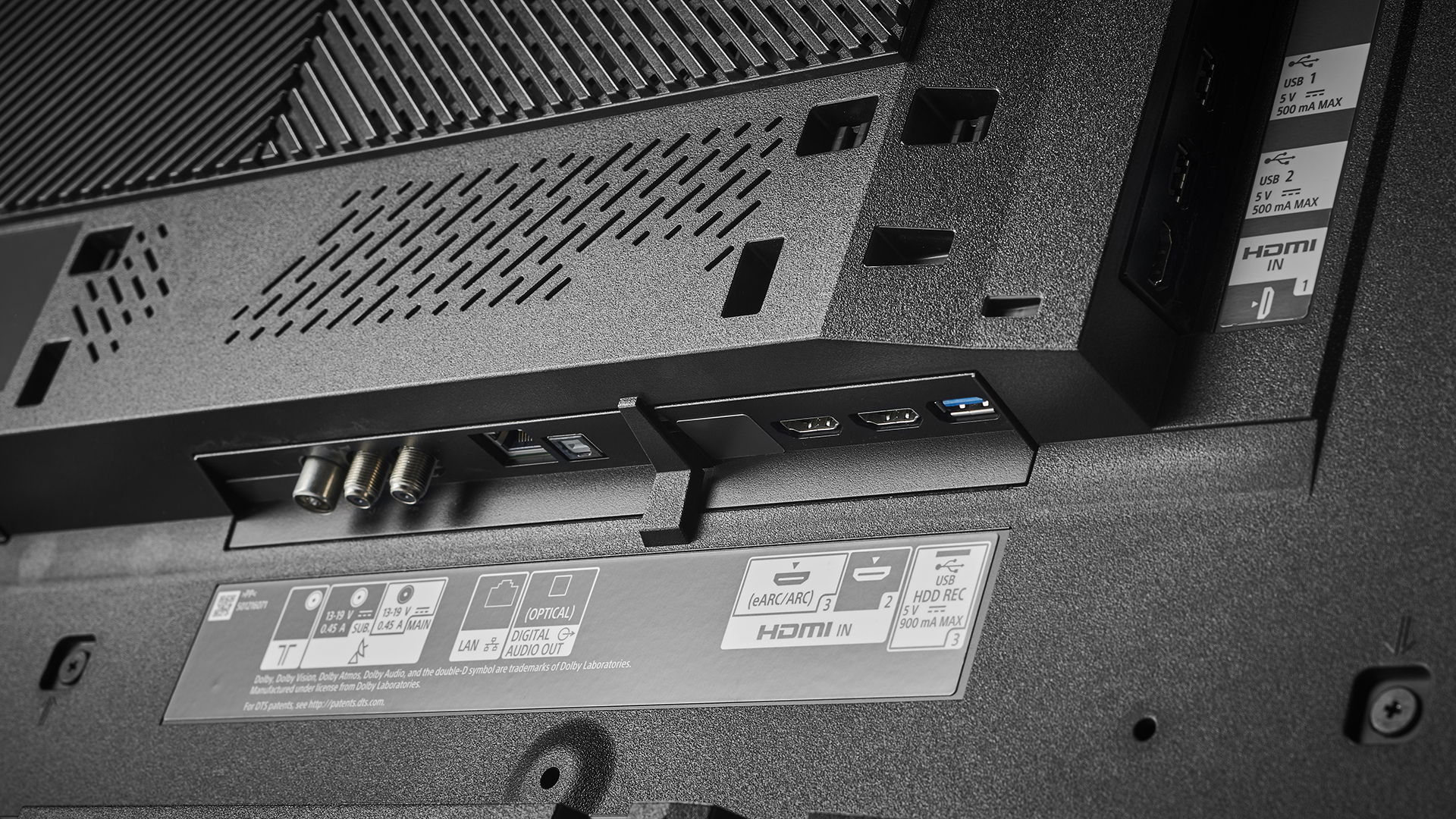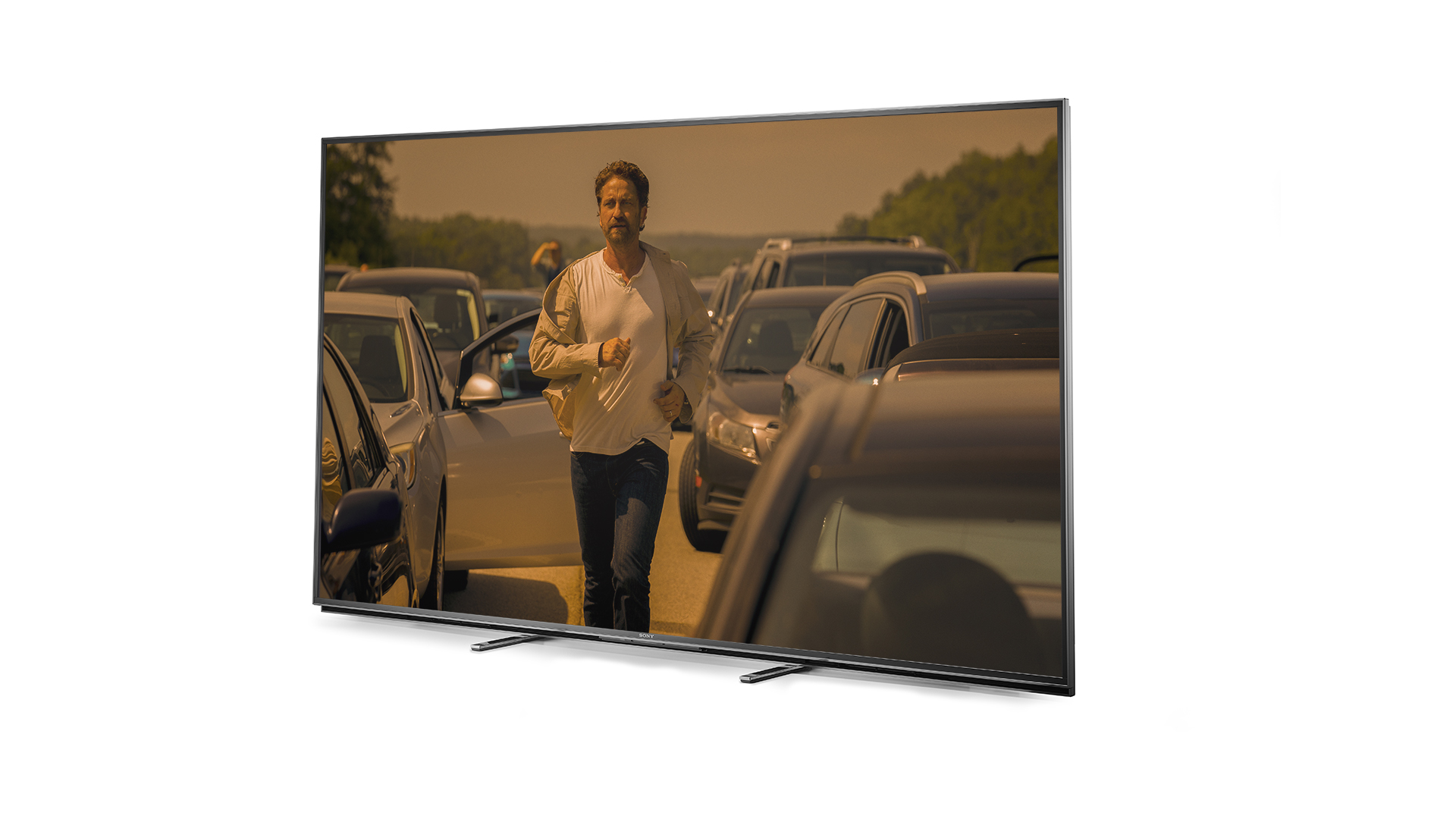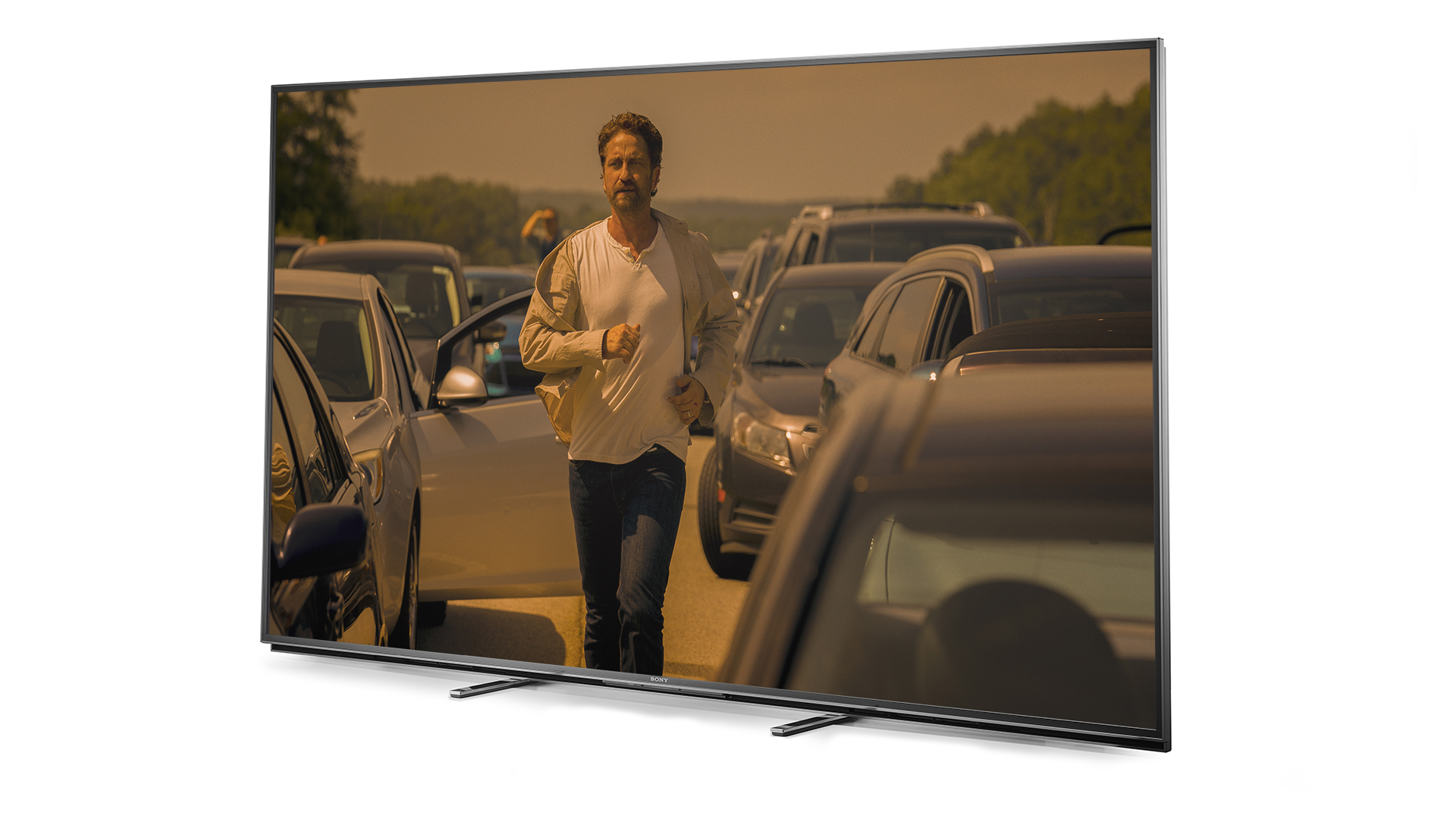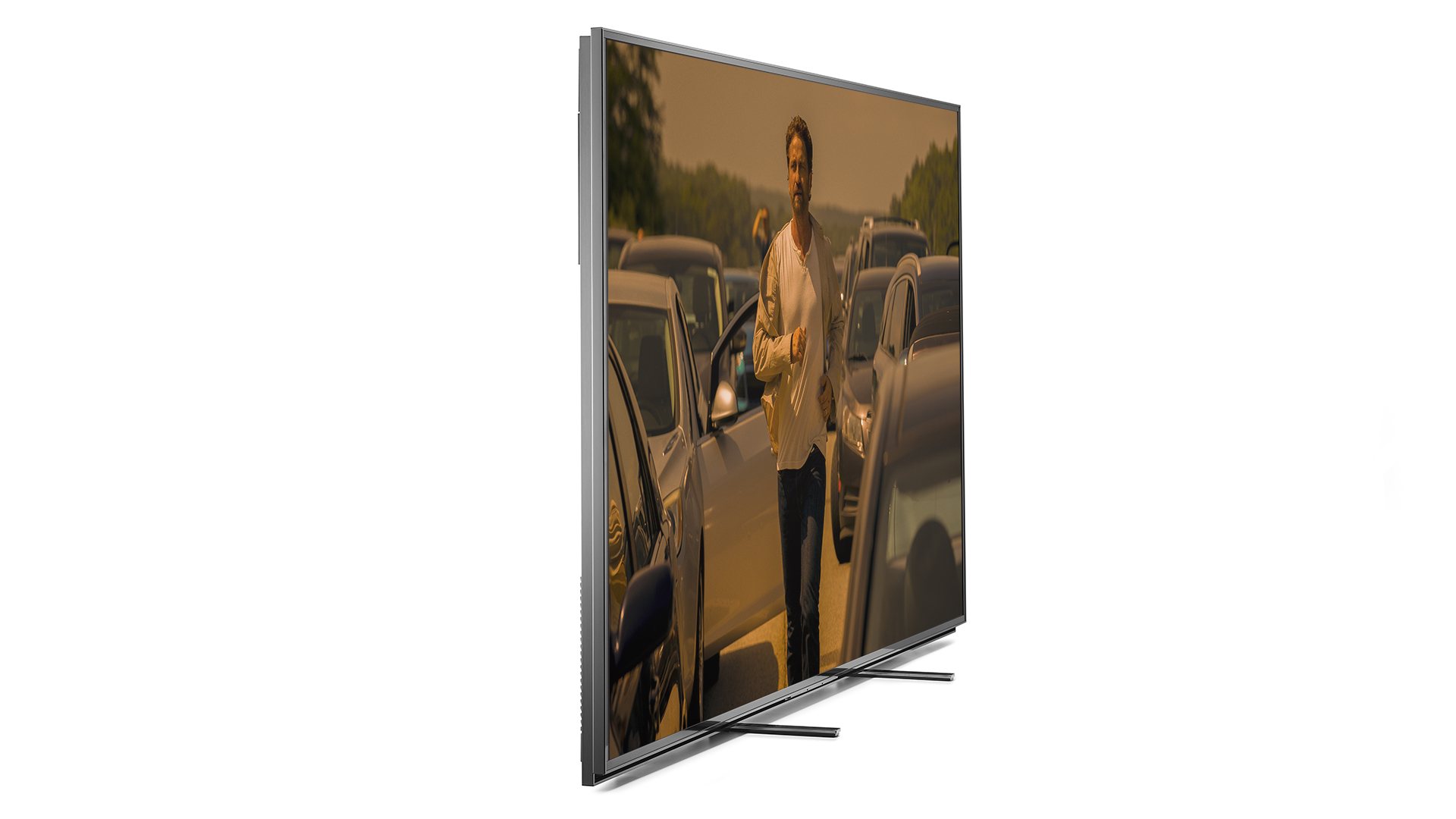What Hi-Fi? Verdict
The ZH8 does a lot of things seriously well, but it makes less sense as a purchase than rival models from Samsung
Pros
- +
Bright and punchy picture
- +
Superb colours and motion
- +
Impressive sound
Cons
- -
Blooming around bright highlights
- -
Plays even less 8K than rivals
- -
Missing some HDMI features
Why you can trust What Hi-Fi?
With the dearth of real 8K content likely to continue for a good while yet, manufacturers have an uphill battle to convince consumers that an 8K TV is a sensible purchase in the here and now.
With the ZH8, here reviewed as the 75-inch KD-75ZH8 model, Sony gets a huge amount right. This is one of the punchiest TVs we’ve tested, and one of the best-sounding too. It’s also aggressively priced for an 8K model, significantly undercutting our current Award-winner in the category.
That said, the ZH8 also lags a little behind its main rival in a couple of key areas, not least of which is its lack of support for the tiny amount of 8K footage that is actually already available.
Pricing
The Sony KD-75ZH8 (XBR-75Z8H in the US) was priced at £5999 ($7000) at launch, but you can now pick it up for £4999 ($4998).
Should you have the space and appetite for an even bigger 8K set, the 85in KD-85ZH8 (XBR-85Z8H) is currently available for £8499 ($9000).
Features

A 75in TV is always going to be a physically daunting proposition, but the Sony KD-75ZH8 is even more imposing than similarly sized rivals thanks to its chunky, industrial design. If you expect a high-end TV to be little more than a super-slim screen, you might be disappointed by the ZH8’s relatively thick bezels and 8.4cm depth – the Samsung QE75Q950TS is just 1.5cm deep. That said, there’s an undeniable stylishness to the Sony, its solidity, straight edges and pointy corners amounting to a seriously premium statement.

Screen type LCD w/ direct LED backlight
Resolution 8K
Operating system Android TV 9.0
HDR formats HDR10, Dolby Vision, HLG
HDMI x4
USB x3
Optical 1
It’s hard to imagine a pedestal stand that wouldn’t buckle under the 48kg weight of the ZH8, so it’s little surprise that Sony has opted for sturdy, low-profile feet instead. These look best when positioned at the bottom corners of the set, but a narrower placement is also an option. With this arrangement, the huge TV will stand on any furniture that’s at least 62cm wide – assuming it’s strong enough to take the 50kg weight with feet attached.
The latest hi-fi, home cinema and tech news, reviews, buying advice and deals, direct to your inbox.
In the box, there are a number of plastic panels that can be attached to the rear of the set, concealing connections and creating an appealing chequerboard pattern. Those connections include four HDMIs, one of which is HDMI 2.1 certified. You might assume that means it has the full suite of advanced HDMI features, but that’s not the case: while the ZH8 supports 8K@60Hz, 4K@120Hz (also known as HFR) and eARC (Enhanced Audio Return Channel), VRR (Variable Refresh Rate) and ALLM (Auto Low Latency Mode) are missing. The absence of those last two features will be disappointing to next-gen gamers: the Xbox Series X makes use of both and the PS5 is due a VRR update in the not too distant future.
As is the norm for all but the most budget-oriented of Sony’s TVs, the ZH8 uses Android TV as its operating system. Android TV gets better with each iteration, and version 9 is no different. As with all Android TVs, the Android portion is installed over a more functional, core operating system, and it makes for a slightly more disjointed user experience than you get from the likes of Samsung and LG. The smart platform feels more like using an external source than it does a core component, for example. That said, Android TV brings bonuses such as Chromecast and Google Assistant (the set is also ‘Works with Alexa’ certified).
Android TV is already pretty well appointed in terms of apps, but Sony has also worked hard to fill any gaps. Netflix, Amazon Prime Video, Disney+, Apple TV, Google Play Movies and Rakuten are all here, in at least HDR10 and most with Dolby Vision (the ZH8 doesn’t support HDR10+, as is the norm for Sony). For the UK, BBC iPlayer, ITV Hub, All 4, My5, Now TV and BT Sport are all present, too. On the music front, Spotify, Tidal and Deezer are integrated, and while Apple Music and Amazon Music aren’t, you can use Chromecast to cast music to the TV from those apps on your phone.
In terms of core technology, the ZH8 is an LCD set with a direct LED backlight, and it uses the Picture Processor X1 Ultimate chip, which is Sony’s most powerful processor until the 2021 Cognitive Processor XR makes its debut with the company's 2021 TVs in a few months’ time. The headline features here are Object Based Super Resolution, which is designed to intelligently analyse and enhance the definition of individual objects in an image, and an enhanced version of Object Based HDR Remaster, which applies a similar approach to contrast.
Picture

Naturally, you’ll want to watch 8K content on your new 8K TV, but that’s even harder to do on the ZH8 than it is with Samsung’s 8K TVs. The only commercially available 8K content out there is streamed by YouTube in the AV1 format, which the ZH8 doesn’t support. You may only be missing out on aerial footage of lovely landscapes, but the fact that the tiny amount of 8K content out there is unplayable on your expensive 8K TV is hugely irritating. What’s more, it raises questions about the extent to which the ZH8 is future-proofed: it looks increasingly likely that the AV1 format is the one that will be utilised for 8K by other streaming services, including Netflix.
We are able to watch 8K content on the ZH8 for this review by using a Sony-supplied media player containing a handful of demo clips. With these clips, the ZH8 puts in a stunning performance that’s so crisp, dynamic and lifelike that you feel you could step right into each scene. However, that’s not an experience you’re going to be able to recreate at home.
Instead, what really matters is how the ZH8 performs with the content you do have access to right now, with the priority being 4K HDR. We insert Blade Runner 2049, one of our most demanding 4K Blu-rays, into our player, and are immediately impressed with the results. What strikes you first about the ZH8’s performance is how punchy and bright it is, particularly in very high-contrast scenarios. Most TVs shy away from fully illuminating the white text that appears from the black background at the beginning of the film, for example, but the ZH8 has no such reservations – this could well be the brightest rendition of this scene-setting copy we’ve seen.
This extreme contrast capability translates well to the film as a whole. As K travels around LA on foot and by flying car, the neon signs and holographic adverts jump out of the depressing dinginess of the rest of the city.
The effectiveness of that punch is further enhanced by the depth of the blacks. It’s not quite OLED levels of perfect blackness, but the ZH8 gets much closer than most LCD TVs, while also proving a dab hand at digging up dark details: on top of that striking contrast, you get superbly subtle shadows, with next to nothing being lost to the gloom.
However, there’s a problem here, and that’s backlight blooming. There are quite obvious halos of light around very bright objects on very dark backgrounds, and light frequently creeps into the black bars at the top and bottom when you’re watching an ultra-widescreen film. It is enough to be distracting at times, which is the last thing you want when you’re trying to sink right into a movie.

The ZH8 is also a little soft and flat in its performance compared with the Samsung QE75Q950TS, which upscales 4K content in such a way that you could almost be fooled into thinking you were watching 8K. The Sony isn’t capable of pulling off the same trick, and the image doesn’t leap from the screen in quite the same way.
That said, there’s a naturalism to the ZH8’s performance that few can match. Its edges aren’t as sharp as those of the Samsung Q950TS, but there’s a smoothness and subtlety to the presentation that’s utterly convincing. It’s significantly better with motion, too, smoothing and sharpening everything without any shimmer or unpleasant artificiality. Its rivals are closing the gap in this regard, but Sony remains out in front.
Arguably the greatest contributor to the ZH8’s naturalism is its colour reproduction. It is capable of stunning vibrancy, but it’s also superbly subtle and nuanced, delivering every character’s unique skin tone, every building’s interior lighting, and every neon sign with unquestionable authenticity. Others might entice the eye a little more effectively, but this Sony (like many of its siblings) delivers on the creator’s intent in a way that few can match.
Dropping down to Looper in 1080p, that overall authenticity remains a strength, and it’s actually sharper and more detailed than the Samsung Q950TS. That said, it’s a fair bit noisier, too, exaggerating the intentional film grain to a degree that some will find distracting. It can be toned down by reducing sharpness and/or increasing noise reduction, but doing so softens the picture too much for our tastes. The perfect balance feels just out of reach, but this is an issue that you’ll encounter only occasionally as few films these days have this level of grain.
Those qualities with Full HD content roughly translate when you switch to standard-definition material. We play our trusty Dirty Harry DVD and the performance is sharp and detailed, which is impressive when you consider the amount of picture information that the TV is creating itself. Again, it’s effortlessly natural and convincing, particularly in terms of colours, although there’s still more picture noise than you’ll get from rival models.
Sound

Sony has been much more creative than its rivals in recent years in terms of TV sound, most notably by turning the entire panel of its OLED models into a speaker. That feature, called Acoustic Surface Technology, isn’t possible with an LCD model such as the ZH8, but Sony has sought to recreate the effect (which it calls ‘Sound from Picture’) by using a couple of tweeters to vibrate the frame of the TV. These work in conjunction with two forward-facing drivers mounted at the bottom to make it seem as if the sound is coming directly from the screen, while two rear-mounted woofers fill out the presentation.
All that effort has paid off handsomely. The ZH8 is clear and direct in its presentation, with the sound and picture linked in a way that’s supremely engaging. This is no one-trick performance, though – the sound is also detailed and dynamic by the standards of a TV sound system, making for an overall delivery that’s both engaging and exciting.
Dolby Atmos is supported and, in conjunction with the Acoustic Auto Calibration feature, which tailors the audio performance to your room, gives appropriate soundtracks plenty of scope and scale without sacrificing that directness. Few if any TV-integrated sound systems can fill a room quite as effectively, while also clearly projecting dialogue.
You can even use the ZH8 as the centre speaker of a surround sound package, should you wish, using the standard speaker terminals on the rear of the set. We wouldn’t recommend that, though – while the ZH8 sounds mighty impressive for a TV, even the best AV amplifier will struggle to tonally integrate it with a set of traditional speakers.
Verdict
There’s so much that the ZH8 gets right, most notably its supremely authentic picture performance and very impressive sound, but we can’t give it our wholehearted recommendation.
8K TVs are already a hard sell, and the fact that the ZH8 won’t play the tiny amount of 8K content that’s already available is a real issue, not least because it raises doubts about its ability to play other 8K content that might appear in the future. What’s more, it doesn’t make use its extra pixels with 4K content the way that the rival Samsung Q950TS does.
As such, the ZH8 may as well be a 4K TV. Even viewed on those terms it's almost worth the full five stars, but the high price and backlight blooming hold it back to a four.
SCORES
- Picture 4
- Sound 5
- Features 4
MORE:
Read our guide to the best 8K televisions
Read our Samsung QE75Q950TS review
What Hi-Fi?, founded in 1976, is the world's leading independent guide to buying and owning hi-fi and home entertainment products. Our comprehensive tests help you buy the very best for your money, with our advice sections giving you step-by-step information on how to get even more from your music and movies. Everything is tested by our dedicated team of in-house reviewers in our custom-built test rooms in London, Reading and Bath. Our coveted five-star rating and Awards are recognised all over the world as the ultimate seal of approval, so you can buy with absolute confidence.

